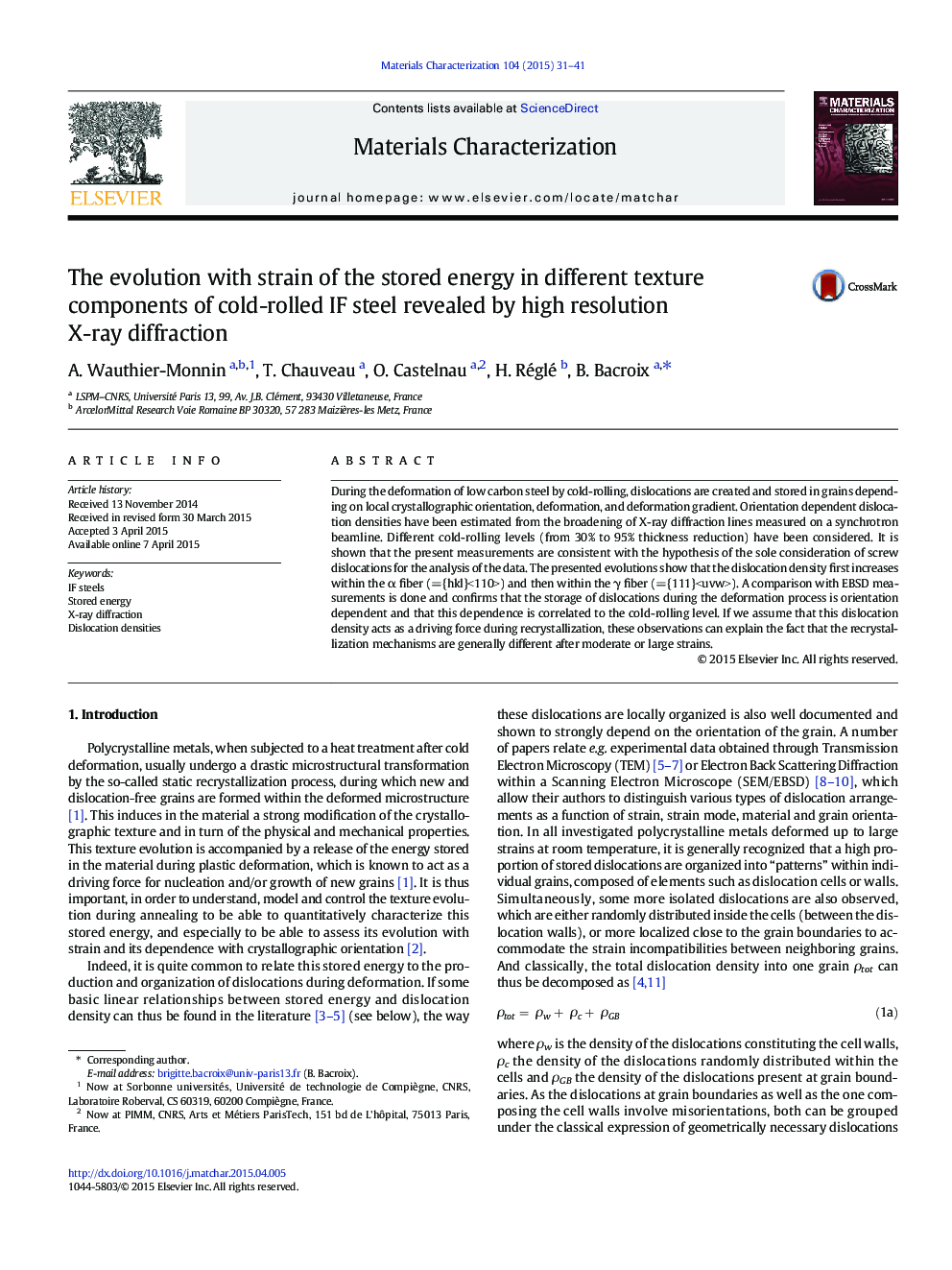| Article ID | Journal | Published Year | Pages | File Type |
|---|---|---|---|---|
| 1570897 | Materials Characterization | 2015 | 11 Pages |
•Dislocation densities are assessed by XRD in main texture components of a steel sheet.•Dislocation densities vary with both strain and texture components.•The analysis relies on the sole presence of screw dislocations.•The measured dislocation densities include the contribution of both SSD and GND.
During the deformation of low carbon steel by cold-rolling, dislocations are created and stored in grains depending on local crystallographic orientation, deformation, and deformation gradient. Orientation dependent dislocation densities have been estimated from the broadening of X-ray diffraction lines measured on a synchrotron beamline. Different cold-rolling levels (from 30% to 95% thickness reduction) have been considered. It is shown that the present measurements are consistent with the hypothesis of the sole consideration of screw dislocations for the analysis of the data. The presented evolutions show that the dislocation density first increases within the α fiber (={hkl}<110>) and then within the γ fiber (={111}
